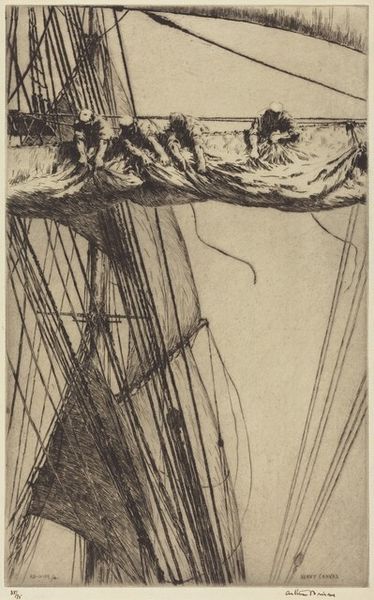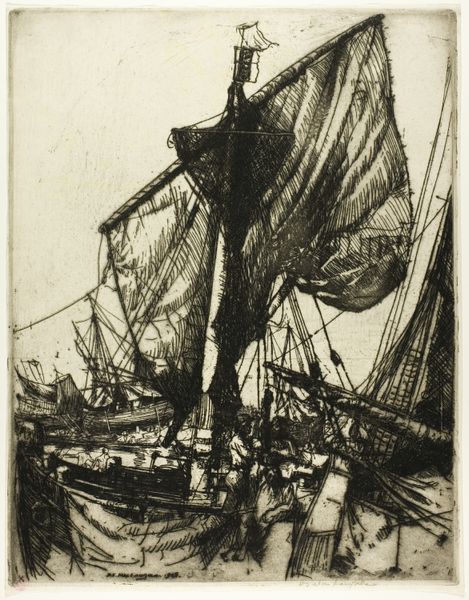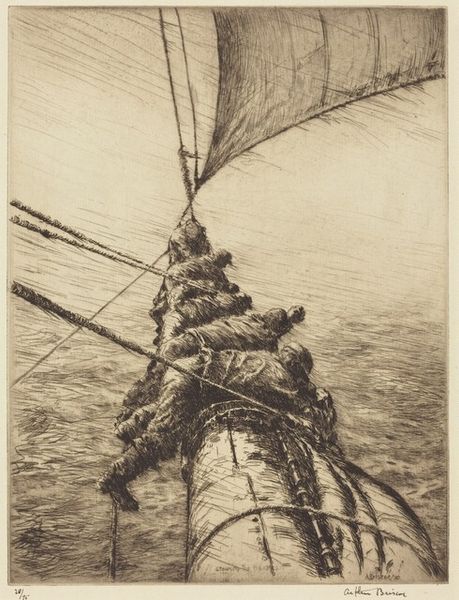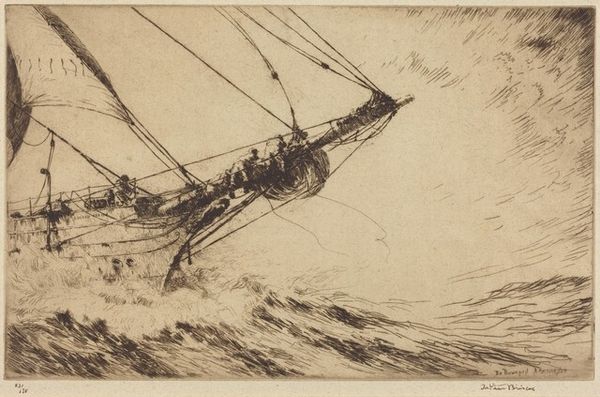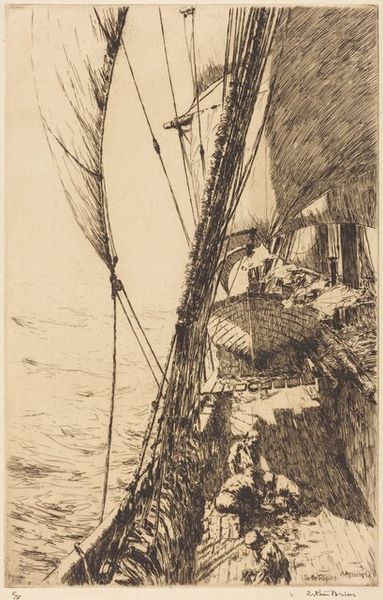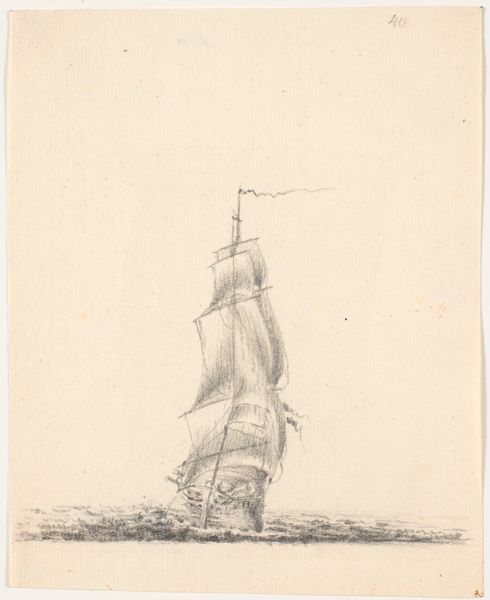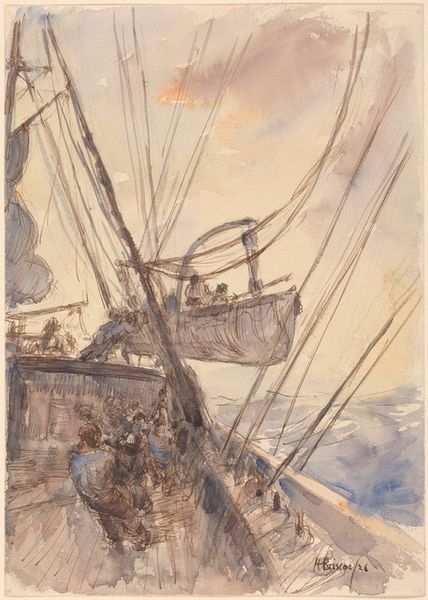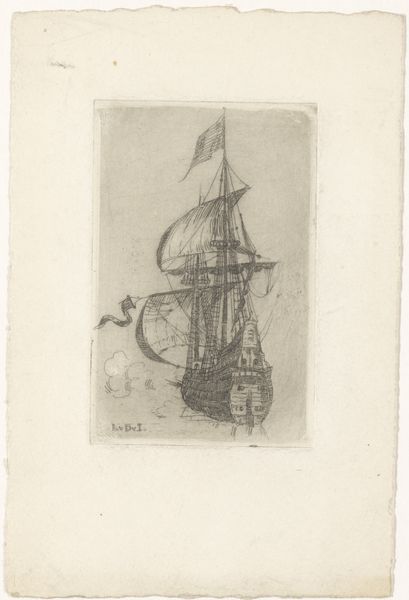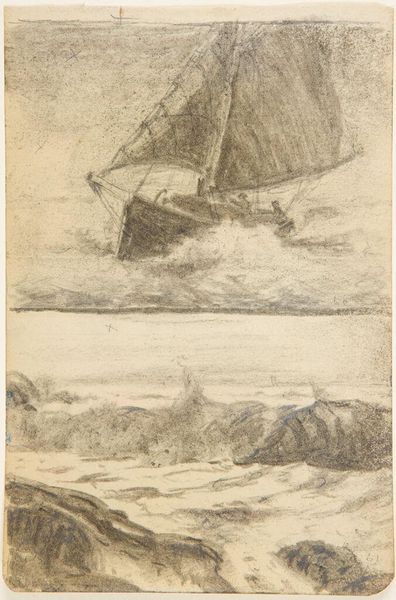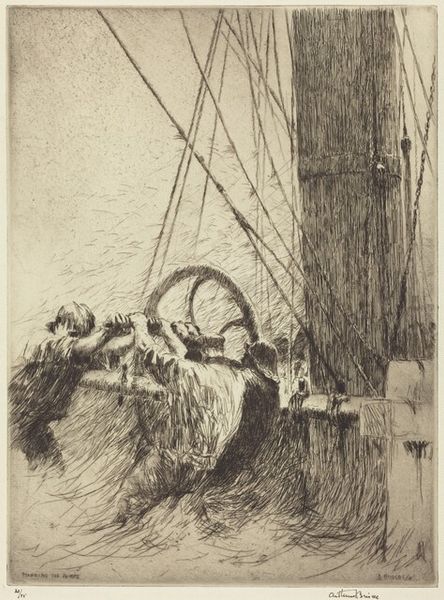
print, etching
# print
#
etching
#
realism
Copyright: National Gallery of Art: CC0 1.0
Editor: Here we have Arthur Briscoe's 1925 etching, "On the Main Yard." It’s so detailed, capturing a moment of intense activity high up on the ship's mast. The close crop really puts you in the action with these sailors. What catches your eye about this piece? Curator: What intrigues me is Briscoe's conscious decision to foreground the labor, the sheer physical exertion of these sailors. Consider the medium, etching, a laborious and meticulous process itself. Doesn't it mirror the sailors' toil? The scratches of the etching needle evoke the rough texture of rope and the weathered wood of the ship. Editor: Absolutely, the physicality is so tangible. It makes me think about how often maritime art romanticizes the sea, and this is a real contrast. Do you see that reflected in his choice of composition at all? Curator: Precisely! Briscoe refrains from picturesque landscapes. Instead, we're confronted with the hard reality of their working environment, the materiality of the vessel. He is documenting not just a scene, but the very nature of maritime labor and its associated cultural experience. What impact do you believe the rise of industrialization may have had on his art? Editor: It really underscores how physically demanding and dangerous their job must have been, especially as larger steamships were on the rise. Maybe he's trying to preserve a fading way of life through the art itself? Curator: Indeed. The print becomes an object imbued with the very spirit of their work. This understanding definitely changes the way I view Briscoe and the context for print making at the time. Editor: Agreed! Seeing the print as evidence of that labor, on both sides of its creation, gives the artwork much more nuance and complexity.
Comments
No comments
Be the first to comment and join the conversation on the ultimate creative platform.

